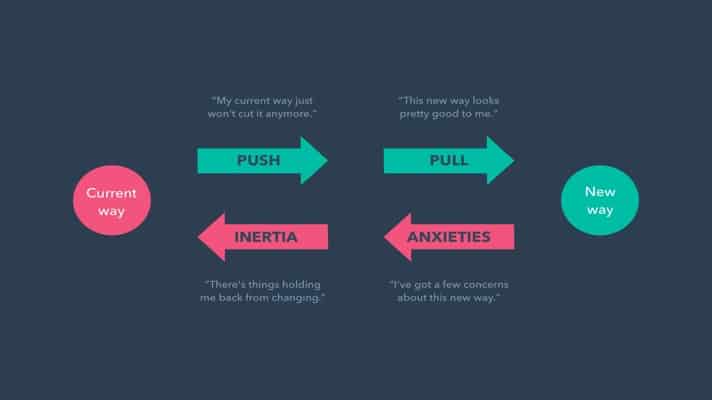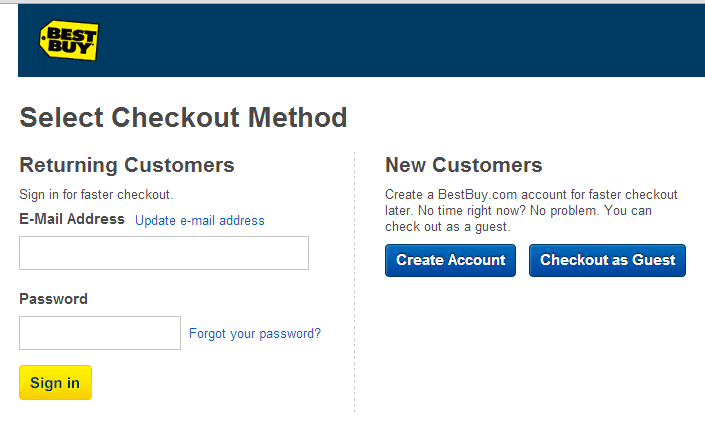The year is 2020.
The world is crippled by a pandemic outbreak.
Brick-and-mortar stores have been forced to close, and visitors are stuck to their devices now more than ever before.
Online shopping is only growing.
This of course triggers technological advancement and growth within eCommerce. We have seen an explosion in the number of direct-to-consumer (D2C) eCommerce brands.
While this growth is good for customers, it is scary for other online businesses.
Why?
Well, the competition is only becoming fiercer.
It’s going to be the survival of the fittest. No growth hacking tactics will save the day. Only those D2C brands with a site optimized for conversions are going to stand tall. But the problem is that conversion rate optimization isn’t easy. Experts say it’s hard.
There are too many optimization strategies and tactics that have to be implemented behind the scenes to make customers bite.
But now that you’re here, I won’t keep you waiting with a cliffhanger; I will show you several techniques that can gradually increase your eCommerce store’s conversion rate when implemented correctly.
Get ready to take notes.
1. Highlight the JTBD in a Product
It’s always hard to read the label from inside the jar. Sometimes you need to step outside and look at your product from the lens of the actual people who use it. D2C brands have direct contact with their customers, and this means that they have a golden opportunity to reach out to them and learn more about their products from the horse’s mouth.
This is where the Jobs-to-be-done framework comes in.
The framework asks, “What job is your product hired to do?”. It’s based on the idea that people want to buy any product to get a job done or make progress against their current situation.
We’ve worked with a brand that sells dancing tutorials that help men, around the globe, learn how to dance with their better half. On the face of it, the brand thought the dance moves in their videos were helping men sweep women off their feet on the dance floor.
But, guess what?
After our team had conducted a series of JTBD interviews, we discovered that people bought the videos because they considered dancing with their partners as a way to strengthen their relationship. In the eyes of customers, these videos were a sort of couples therapy that helped them address their particular issues in a manner that reduces stress.
Well, that’s the power of the JTBD technique. It reveals other angles of your product that can be used to increase more conversions.
But here is the thing, not every customer who buys from you is an ideal candidate for the JTBD interviews – make sure you use this criterion to select suitable candidates:
- Customers who purchased the product or the service in question.
- Customers who bought the product between a month to three months ago.
- Customers who have used the product since buying it.
- Recruit buyers or decision-makers.
As you interview customers and try to handle the struggling moments that led them to buy your product, you also want to learn about all the three different kinds of jobs: functional, emotional, and social.
Functional job: this is the practical and objective requirements of a customer. The functional job is the anchor in which the social and emotional needs are defined.
Emotional job: this is the subjective customer requirements related to feelings and perception. Alternatively, you can think of it as the feeling that customers want to have or avoid when purchasing and using the product or service.
Social job: how the customer believes they are perceived by others while using the solution that your product provides.
For instance, most people would say they buy headphones to “listen to music,” which is true. But that’s the functional job of the earphones. If a brand that sells headphones were to dig deeper using the JTBD technique, they’d probably be surprised by the emotional and social jobs that their product is hired to do.
In this context, the emotional job may be the need to overcome boredom by using headphones to listen to music. And the social job for hiring headphones may be the need to be perceived as enjoying listening to music.
Besides helping you understand what your product is hired to do, the JTBD framework also reveals the factors that increase and decrease the demand for your product from the customer’s perspective. These factors are known as the forces of progress, and they are spelled out in the diagram below:

This level of detail is essential because it gives you ideas to insert in your messaging, site copy, ads, and marketing campaigns. Brand messaging written using the words of customers is the best performing copy. Using the customer’s words to describe their problem back to them will make them feel understood, and all they will see is themselves as they go through the copy.
2. Escape the competitive herd
As it is right now, the world is drowning in D2C eCommerce brands. The harsh reality is that not all brands are going to be successful. In fact, most of the D2C brands are going to bite the dust if they fail to escape the sea of sameness.
But how can they escape the sea of sameness? Well, being different from other brands. The fact that many D2C eCommerce brands erupted in 2020 is a good enough reason to make you commit to differentiation.
You’d think that brands are all about differentiation – but, only a few have the guts to go down that road because differentiation is no easy thing to do.

Real differentiation comes from being original. Unlike what most people think, prices and features do not spell out differentiation. Relying on features and prices as a competitive advantage is not sustainable – your competitors can easily copy those.
Most D2C eCommerce brands are comfortable being similar to other brands because differentiation is scary, risky, and hard to achieve. But it’s hard to get noticed when you look like others. And that’s a problem.
Those that are brave enough to walk the lonely road of being different, always tilt the decision of customers in their favor. You gain a lot of market share for your brand.
So how then should you escape the sea of sameness?
Well, your best card is your brand. Yes, if you put all your efforts into building a well-recognized brand you will stay winning. Ooh, by the way, when I say brand I’m not referring to your design aspects – logo, colors, or fonts. By brand, I mean the perceptions that customers have about your company.
According to the Havard Professor, Youngme Moon, there are three key strategies that you can use to differentiate your brand:
- Reversal. These are lopsided, as opposed to well-rounded, brands that “…eliminate, but they also elevate. They strip things down, even as they sweeten things up. Reverse brands put their peers on the defensive by forcing them to reevaluate the rationality of their own value propositions. Reverse brands create a kind of tilt… applying pressure in exactly the place where we least expect it.” (Examples: Nintendo Wii, JetBlue, Google, IKEA, In-N-Out Burger)
- Breakaway. These are brands that reset our mind, give us an alternative frame of reference, recategorize and redefine familiar things, and as Youngme writes, say to consumers “I know you’re inclined to think of this as a slice of SWISS CHEESE, but what if you were to think of it as a FLYING CARPET instead?” Breakaway brands are a half-step away from being in their own category, but bill themselves as the extremist, the boundary breaker in an established field. (Examples: Swatch, Cirque du Soleil, Kimberly-Clark Pull-Ups, The Simpsons)
- Hostility. Yes, you read that right! These are the velvet-roped, exclusive brands that play aloof and hard to get. “Instead of laying down the welcome mat, they lay down a gauntlet. Hostile brands present us with their product, warts and all, and if we don’t like it, tough.” Hostile brands don’t market, they anti-market. It’s a twisted seduction—old-schoolers may call it arrogance, but new-schoolers call it cool. Think: The Soup Nazi on Seinfeld. (Examples: MINI Cooper, Red Bull, Birkenstock, Hollister)
While you work on your business brand, invest in your personal brand as well. After all, has been said and done, people buy from people they trust. Effective personal branding will differentiate you from the competition and allow you to build trust with prospective customers.
Outside of branding, a superior customer experience can be used as a key competitive differentiator. More than just customer service (how a brand interacts with a customer at certain touchpoints), customer experience is the total sum of a customer’s perception of how a brand treats them. These perceptions affect behaviors and build memories and feelings that lead to customer loyalty.
Although it can be quite difficult to keep up with the customers’ changing behaviors and expectations, brands need a holistic understanding of their customers so they can wow them at every single interaction.
Here’s a brief breakdown of three critical pillars that will help you deliver an outstanding customer experience:
- Personalize experiences. Now that D2C brands can engage directly with their customers, these brands need to deliver relevant content informed by past exchanges. Research studies concluded that personalized recommendations compel 49% of customers to buy something they did not intend to purchase from a brand they were doing business with,
- Optimize the customer journey. Every touchpoint of the brand that customers have has to be optimized. This can be done by mapping and reviewing every touchpoint from a customer perspective, and not from an internal business one.
- Safeguard customers’ personal information. Customers absolutely demand that you safeguard and protect their data if you want to earn their trust.
Let me end this section with one of my favorite laws – in the book The 22 Immutable Laws of Marketing – which is the law of the mind:
“It’s not important to be the first in the market but the first in the mind of consumers.”
3. Double down on existing customers
Whether in eCommerce, SaaS, or Lead Gen, all the fastest-growing brands have one thing in common: loyal customers. These kinds of customers were once first time buyers, but the way you treated them is what turned them into loyal customers.
One fatal mistake that D2C brands make is to fall into the trap of spending their resources trying to acquire new customers and ignoring their existing customers. D2C eCommerce brands are more likely to achieve a better return on investment by nurturing their current customers rather than always seeking new ones.
You’ve heard it once; you’ve heard it a thousand times: it costs a business six times as much to acquire a new customer as it does to keep an existing one. Even better, a sale to a new customer is only five to 20%, while the probability of a deal to an existing customer is between 60 to 70 percent. Other studies go on to say that existing customers tend to spend more each time they shop.
This is not to say that you should not try to bring in new customers, it’s good to have both, but the emphasis should be on cultivating shoppers with a high lifetime value. You are more likely going to increase profits if you get more sales from existing, high-quality customers.
So what’s the practical way of keeping your existing customers?
If possible, throw in a little something extra, loyalty programs, give a freebie, or send a small gift to those loyal customers that have been on your corner. It’s important to demonstrate through your actions to your customers so that they know that you consider them special and care about them.
Continually optimizing your site caters to existing customers, which will make you more money. Conversion optimization is like finding a winning stock. By investing the same amount as you always have, you get more returns. It is a process that continually needs fine-tuning and commitment, but there is still room to further improve and create more conversions from your existing traffic.
4. Don’t be afraid of content
Remember, the focus is not only on the overall buying experience but also on engaging customers. This can be done by creating innovative and informative content. Too many D2C eCommerce marketers might come in as a shocker because content marketing and eCommerce seem to be two different universes. But these two are a marketing’s power couple.
To see the power of content marketing in action, take a sneak peek into B2C and B2B marketing, and you will see how it is used to drive more eCommerce sales strategically.
My favorite example of a D2C eCommerce brand that uses content marketing to attain more sales is Glossier. If you visit their Social Media platforms such as Instagram, you will see how they produce informative video clips that teach their followers how to apply facial massages and acupuncture techniques. Not only does this kind of content marketing attract new customers, but it also keeps the existing customers engaged and entertained.
With that said, so how should you go about content marketing in your D2C eCommerce store?
Start slow and be patient. With content marketing, it’s all about playing the long game. One piece of useful content you publish today might not perform as you’d have anticipated today, but three months down the line, that same piece can get you, new customers. And one other thing, if you have about 50 products you’re selling, don’t try to create content around all products. Build some informative content around a few, and gain the trust of your customers first.
Solve customer problems. Content that usually performs best is the one that is focused on teaching rather than selling. If you can publish articles that zero in on what customers are asking, you will eventually see an increase in conversions.
Personalize everything. We have already covered the importance of personalization in eCommerce. But to give you a reminder: if you are not personalizing your content for a specific buyer, you’re no different from a person who opens the window of a skyscraper and starts shouting.
5. Be approachable
For a long time, customers were used to buying from traditional stores and not from manufacturers themselves. This means that D2C brands are no longer at the mercy of traditional stores and go-betweens; they now have to promote and make themselves approachable to customers.
Making your company less intimidating to your target audience can improve your bottom line. A handful of customers can associate with a business that projects an arrogant or less approachable image.
As a marketer, you get to be in charge of how approachable your brand is, and here are the three techniques that make it possible.
Interact with customers on social media. You should never view your brand’s social media platforms as one-way communication channels. Instead, use your social channels to listen and respond to customers’ feedback.
Provide free resources. Nothing screams approachability than providing valuable resources to your customers with no strings attached or money required. We once worked with a client who was selling dog crates, but their resources were beyond their products. They also provided free information about the right kind of food for dogs, how to make dog treats, how to keep your dog healthy, etc.
Be known for one thing. This point is really about being specific and straightforward about your market. As an example, SkinnyMeTea is appealing because of how the brand has positioned itself: tea for people who want to be skinny. For that reason, customers can trust it to provide what it promises.
6. Highlight The Value
People buy products that solve their problems or make their life comfortable. This is to say that customers don’t care about the features of your product, but they are interested in what it can do for them. When crafting your web copy, ads, and marketing campaigns talk about the benefits, the “Why” they need it, and “What” your product will do for them.

For instance, if you sell food products, then you would want your customers to know if a certain item is made from certified organic ingredients or that they’re 100% cruelty-free.
Here’s a real example from a D2C brand called Drop Bottle. They sell water bottles! So what? There are many different brands that have the same product out there, right? What makes Drop Bottle different is how they clearly articulate the benefits of using their water bottle:

Drop Bottle could have easily highlighted the features of its water bottle, but it’s all about the benefits. it’s easy to compel a customer to make a purchase if they know what the outcome is.
If you don’t understand what the benefits of your products are for your customers, then every copy, ad, or marketing campaign you craft will be a hit and miss, meaning the sales cycle will take longer and will not be consistent.
7. Leverage Customer Data
One of the benefits of using a D2C model is that you having customer data in the palm of your hands. Using customer data, there are many wonders you can do for your brand, and one of them is personalizing the customer experience.
You’ve heard it once; you’ve heard it a thousand times: personalization is the key to increasing sales funnel conversions.

But when it comes to customer data, it’s easy to drown in Analytics and end up using the wrong set of data. So, this begs the question, which kind of data should you focus on exactly?
Well, there are three avenues D2C brands can mine for insightful customer data in order to effectively personalize their marketing communications: website, mobile app, and email.
Here is the type of data that you can use to personalize customer experience:
Contextual data
Contextual information, such as the device and browser used or the shopper’s location, weather, and the date and time of opening an email or visiting a website, all offer opportunities to determine which content is presented to the shopper on each channel.
Demographic data
For most customers, you should be able to access demographic information such as gender, city, country, and potentially age, which you can use for segmented campaigns.
Behavioral data
Behavioral and transactional data will give you a more accurate picture of a customer’s preferences and habits. Insights can be gleaned by looking at behavioral information, such as browse data, abandoned cart data, content consumed, search keywords, or visitor frequency, as well as transactional data, such as purchase history.
8. Optimize the Checkout Process
Most eCommerce sites would be happy to convert 3 or 4 out of ten customers who have actually added items to their shopping cart.
And guess where much of the leakage happens at?
Yes, you’re right…in the final phase of conversion; which is the checkout page.
Fortunately, there are many strategies you can use to optimize your checkout page. Here are a few of them:
Simplify the Process
In one of the studies we conducted, Shopping Cart Abandonment Rate Statistics, we discovered that 12% of shoppers abandon their carts because the checkout “needed too much information” and 11% said the checkout was too complex.
Treat Guests Like Family
14% of customers abandon their checkout because they are required to open an account. Guest checkout options let customers complete transactions quickly and easily without the fear that they have exposed their information yet again.

I understand that as an eCommerce brand, you would like to gather as much customer data as possible. But it’s value must be weighed against the cost of lost sales.
Show Some Credibility
Your customers, especially new ones, need to know that yours is a trustworthy business, and credibility symbols are a good way to let them know. A tangible store gives customers the reassurance that it will be there if the customer needs to make a return, if they want to buy complementary products later, if they need service, etc., etc.
Have few fields on your form
When designing your checkout process, assume that each customer is using ecommerce for the first time. If you require much information, you increase the risk of getting nothing.
Clearly let them know when something is wrong
How many times have you been through checkout, fill in all the information, double-check your order, and finally click the last “Submit Order” button, only to have absolutely nothing happen? How frustrating is that? Many shoppers can leave the checkout because of that silly mistake.
9. Take Content-first Approach
Writing helpful and valuable content is not just a way to engage your target audience, but it’s a marketing superpower that can be used to make your revenue explode.
Here’s the thing…
No matter how well designed your website is, when potential customers land on it, they have fears, uncertainties, and doubts, and even questions pertaining to your product. The best way to address their queries is by feeding them with information that shows the benefits and value provided by your product.
Eve, a UK-based mattress maker, is a perfect example of a D2C brand that has been using articles and blog posts to inform its target audience about the value of a good night’s sleep, and what their mattresses could do to solve people’s sleeping problems.

Whether it’s a SaaS or eCommerce business, today’s consumers need informative content that builds trust in a brand from the ground up. Content builds awareness and loyalty –especially when the content is less focused on selling and centered on sharing information.
The more value and information your content provides, the more trust you earn from your target audience.
Producing content regularly and effectively helps create an authority with search engines and improves your rankings. Most importantly, it helps generate leads.
Another advantage of creating content as a D2C brand is that it showcases your expertise in your industry – and this is something that will boost your authority and credibility.
Providing helpful long-form content, demo videos that demonstrate how the product works and meets your customers’ needs, personalized emails that help your customers, and information about how your company serves a purpose bigger than your bottom line can go a long way toward that transparency that customers demand.
10. Harness the power of community
Humans in general don’t want to feel alone and isolated. We all crave that sense of belonging or of being part of a certain tribe or community.
This makes building a community critical to any business type, whether B2C, B2B, or D2C. So if it’s that important for a brand to create a community, why is it that many companies don’t have communities?
Well, building a community is not an easy thing to do. It can be expensive and time-consuming.
But, at the end of the day, it’s worth it.
Whether it’s through online platforms or in-person events, having a community is key to brand awareness, understanding of customers, improving outcomes, and fosters brand loyalty.
A strong and engaged community will lead to improved products, learning, and innovation, as well as company growth. However, to be impactful, brands need to build communities that go beyond selling a product and provide value and support for members.
Parting words…
With customer data now at their fingertips, D2C eCommerce marketers now have no excuse when it comes to increasing conversions on their site. Chances are, there are several reasons why your conversion rate might not be as high as it could potentially be. The discussion in this article can point you in the right direction, but you should have a reliable optimization process – such as our SHIP methodology – that will help uncover conversion issues and opportunities on your site. There’s no such thing as optimized to death – as long as your conversion rate is not 100%, there’s always room for improvement.



